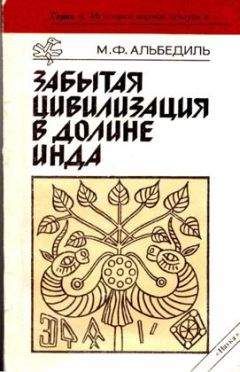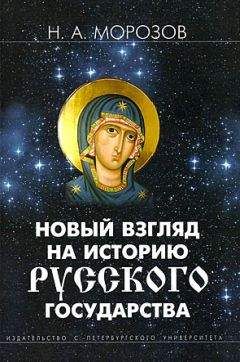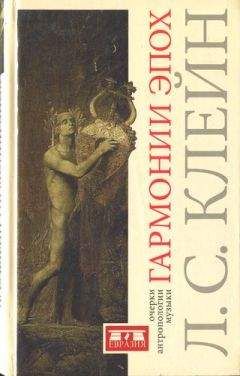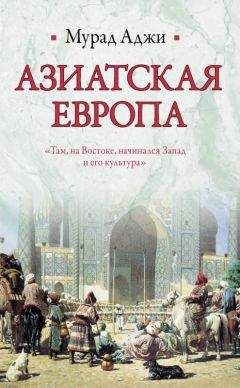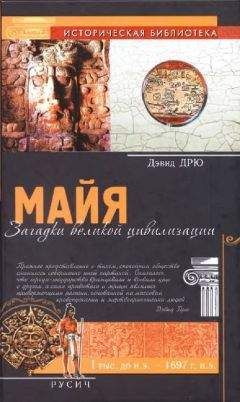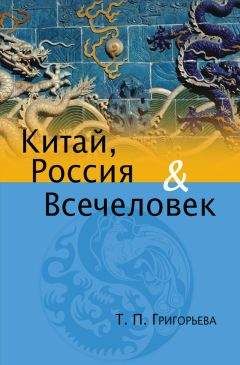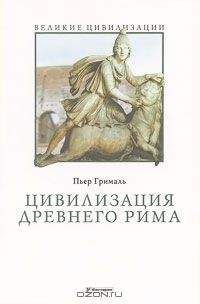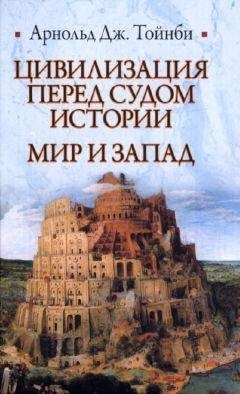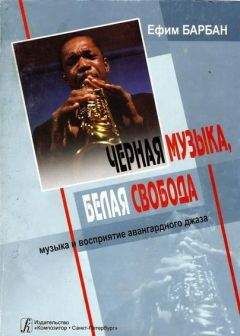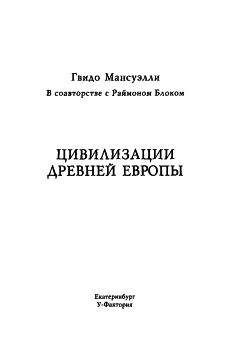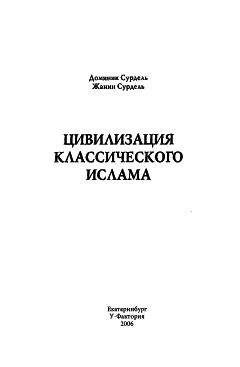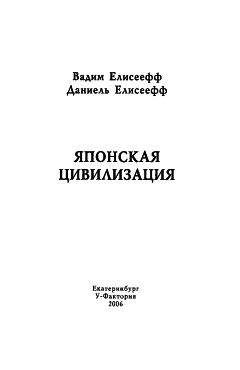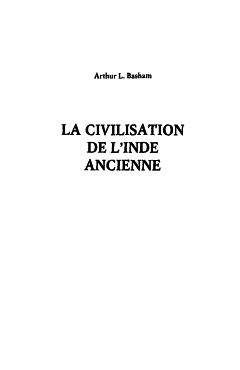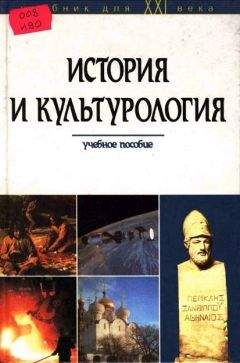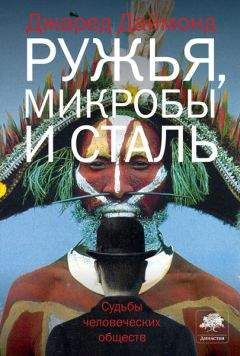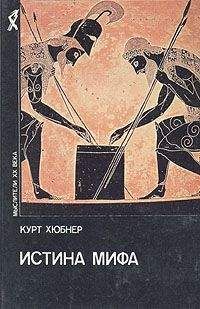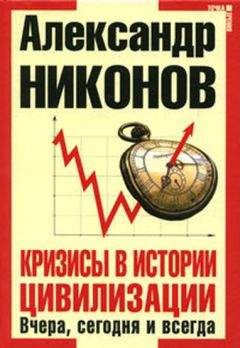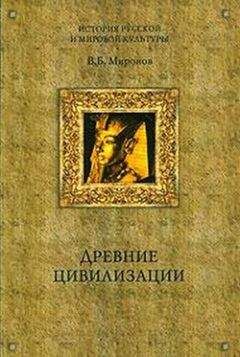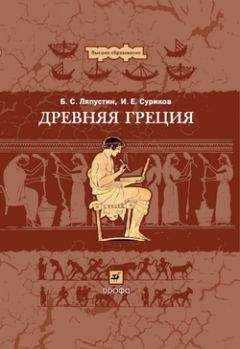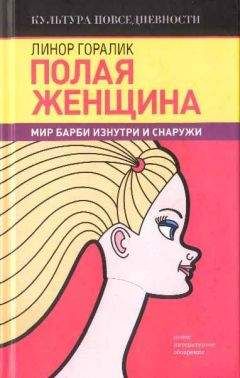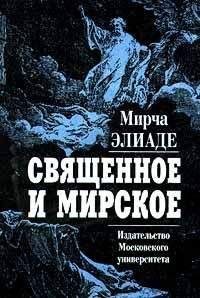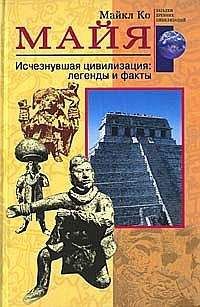Фелипе Фернандес-Арместо - Цивилизации
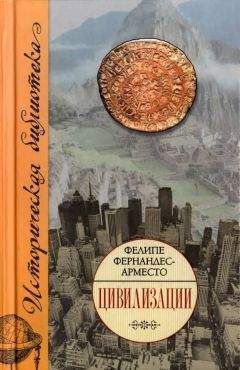
Скачивание начинается... Если скачивание не началось автоматически, пожалуйста нажмите на эту ссылку.
Жалоба
Напишите нам, и мы в срочном порядке примем меры.
Описание книги "Цивилизации"
Описание и краткое содержание "Цивилизации" читать бесплатно онлайн.
Фелипе Фернандес-Арместо — известный современный историк, преподаватель Университета Миннесоты, лауреат нескольких профессиональных премий и автор международных бестселлеров, среди которых особое место занимает фундаментальный труд «Цивилизации».
Что такое цивилизация?
Чем отличается «цивилизационный» подход к истории от «формационного»?
И почему общества, не пытавшиеся изменить окружающий мир, а, напротив, подстраивавшиеся под его требования исключены официальной наукой из списка высокоразвитых цивилизаций?
Кочевники африканских пустынь и островитяне Полинезии.
Эскимосы и иннуиты Заполярья, индейцы Северной Америки и австралийские аборигены.
Веками их считали в лучшем случае «благородными дикарями», а в худшем — полулюдьми, варварами, находящимися на самой низкой ступени развития.
Но так ли это в реальности?
Фелипе Фернандес-Арместо предлагает в своей потрясающей, вызвавшей множество споров и дискуссий книге совершенно новый и неожиданный взгляд на историю «низкоразвитых» обществ, стоящих, по его мнению, много выше обществ высокоразвитых.
627
G. Yazdani, ed., The Early History of the Deccan, vol. i (London, 1960), p. 13.
628
К. C. Day, ‘Storage and Labor Service: a Production and Management Design for the Andean Area’, в книге М. E. Moseley and К. C. Day, eds, Chan Chan: Andean Desert City (Albuquerque, 1982), pp. 338–349.
629
C. Morris and A. von Hagen, The Inka Empire and its Andean Origins (New York, 1993), p. 54.
630
Т. С. Patterson, The Huaca La Florida, Rimac Valley, Peru’, в книге С. В. Donnan, ed., Early Ceremonial Architecture of the Andes (Washington, DC, 1985), pp. 59–70.
631
T. Pozorski, The Early Horizon Site of Huaca de los Reyes: Societal Implications’, American Antiquity, xlv (1980), pp. 100–161.
632
R. L. Burger, ‘Unity and Heterogeneity within the Chavin Horizon’, в книге R. W. Keatinge, ed., Peruvian Prehistory: an Overview of Pre-Inca and Inca Society (Cambridge, 1988), pp. 99-144.
633
Ibid., p. 161.
634
A. Kolata, The Agricultural Foundations of the Tiwanaku State: a View from the Heartland’, American Antiquity, li, pp. 748–762; The Technology and Organization of Agricultural Production in the Tiwanaku State’, Latin American Antiquity, ii (1991), pp. 99-125; cm. D. E. Arnold, Ecology and Ceramic Production in an Andean Community (Cambridge, 1993), p. 31.
635
K. Berrin, ed., Feathered Serpents and Flowering Trees: Reconstructing the Murals of Teotihuacan (San Francisco, 1988), pp. 141–228.
636
R. E. Blanton, Monte Albdn: Settlement Patterns at the Ancient Zapotec Capital (New York, 1978).
637
J. Marcus and К. V. Flannery, Zapotec Civilization (London, 1966), p. 197.
638
J. W. Whitecotton, Zapotec Ethnology: Pictorial Genealogies in Eastern Oaxaca (Nashville, 1990).
639
R. Spores, ‘Tututepec: a Post-classic Mixtec Conquest State’, Ancient Mesoamerica, iv(1993), pp. 167–174.
640
R. A. Diehl, Tula: the Toltec Capital of Ancient Mexico (London, 1983), pp. 41, 162.
641
M. J. Macri, ‘Maya and other Mesoamerican Scripts’ в книге P. Daniels, and W. Bright, eds, The Worlds Writing Systems (Oxford, 1996), pp. 172–182. Обсуждение проблемы кипу было основательно выведено из равновесия открытием иезуитского трактата, ранее известного только по ссылке 1750 года и содержащего часть алфавита инков: опубликовано в С. Animato, P. A. Rossi and С. Miccinelli, Quipu: il nodo parlante dei misteriosi Incas (Genoa, 1994) и обсуждается в V. and D. Domenici, Talking Knots of the Inka’, Archaeology (November-December 1996), pp. 50–56. См. также M. and R. Ascher, Code of the Quipu: a Study in Media, Mathematics and Culture (Ann Arbor, 1981); E. H. Boone and W. D. Mignolo, eds, Writing without Words: Alternative Literacies in Mesoamerica and the Andes (Durham, NC, 1994), особенно замечания Т. Камминса о проблеме кипу, pp. 188–219. См. также выше, с. 272.
642
N. Wachtel, ‘The mitimas of the Cochabamba Valley: the Colonisation Policy of Huayna Сарае’, в книге G. A. Collier, R. I. Rosaldo and J. D. Wirth, eds, The Inca and Aztec States 1400–1800 (New York, 1982), pp. 199–235.
643
F. Solis, Gloria у fama mexica (Mexico, 1991), pp. 98, 104, 108, in, 112.
644
Высокогорные плато Южной Америки.
645
Hip61ito Unanue, ‘Observaciones sobre el clima de Lima у sus influencias en los seres organizados, en especial el hombre’ в книге J. Arias-Schreiber Pezet, ed., Los ideologos: Hipolito Unanue, vol. viii (Lima, 1974), p. 47. Я обязан этой ссылкой любезности профессора Хорхе Канизареса Эсгуэрры.
646
J. V. Murra, Vormaciones economicas у politicos del mundo andino (Lima, 1975), pp. 45–57.
647
R. E. Blanton, ‘The Basin of Mexico Market System and the Growth of Empire’ в книге F. Berdan et al., Aztec Imperial Strategies (Washington, DC), 1996, pp. 47–84; cm. S. Gorenstein and H. Perlstein Pollard, The Tarascan Civilization: a Late Pre-Hispanic Culture System (Nashville, 1983), pp. 98-102.
648
M. G. Hodge, ‘Political Organization of Central Provinces’ в книге Berdan et al., op. cit., p. 29.
649
Мексиканское блюдо, толченая кукуруза с мясом и красным перцем.
650
B. de Sahagun, Historia general de las cosas de Nueva Espafia, ed. A. M. Garibay K(itana) (Mexico, 1989), p. 463.
651
М. E. Smith, The Aztecs (Oxford, 1997), pp. 69–79.
652
Стиль мексиканской народной музыки, а также группы и музыканты этого стиля.
653
J. R. Parsons, ‘The Role of Chinampa agriculture in the Food Supply of Aztec Tenochtitlan’, в книге С. E. Cleland, ed., Cultural Change and Continuity: Essays in Honor of James Bennett Griffin (New York, 1976), pp. 233–257.
654
J. Cooper Clark, ed., Codex Mendoza, 3 vols (London, 1931–1932), vol. i, fos 19–55; F. Berdan and J. de Durand-Forest, eds, Matncula de tributes: codice de Moctezuma (Codices Selecti, lxviii) (Graz, 1980).
655
C. Morris and D. E. Thompson, Huanuco Pampa: an Inca City and its Hinterland (London, 1985), p. 90.
656
P. Cieza de Leon, Cronicas del Peril, ed. F. Canm, 3 vols (Lima, 1987), vol. ii, p. 81; cm. vol. iii, pp. 226–227.
657
G. W. Conrad and A. A. Demarest, Religion and Empire: the Dynamics of Aztec and Inca Expansion (New York, 1984).
658
A. Chavero, ed., Lienzo de Tlaxcala (Mexico, 1979), plates 9, 10, 14, 21 etc.; в подготовленной к печати работе Дж. Е. Кича считает это доказательство ненадежным, в основном на базе прочтения В. Dfaz, op. cit., vol. ii, pp. 32–49, 54–57, и полагает, что испанцы играли важную роль в сражении. Я благодарен профессору Кичу за то, что он показал мне рукопись своей работы.
659
S. Lombardo de Ruiz et al., Atlas historico de la ciudad de Mexico, 2 vols (Mexico, 1996–1997), vol. i, pp. 214–285.
660
Samuel Johnson, Rasselas, отрывок в T. Packenham, The Mountains ofRasselas ((New York, 1959), p. 58).
661
Thomas Love Peacock, Headlong Hall, ch. 6 (The Novels of Thomas Love Peacock, ed. D. Garrett (London, 1963), p. 42).
662
L. Tregance, Adventures in New Guinea: the Narrative of Louis Tregance, a French Sailor, ed. H. Crocker (London, 1876).
663
J. Diamond, Guns, Germs and Steel: the Fates of Human Societies (London, 1997), pp. 146–150, 303.
664
B. Connolly and R. Anderson, First Contact (New York, 1987), p. 24.
665
Ibid., p. 29.
666
P. Brown, Highland Peoples of New Guinea (Cambridge, 1978), pp. 10–11.
667
M. Godelier, ‘Social hierarchies among the Baruya of New Guinea’, в книге A. Strathern, Inequality in New Guinea Highlands Societies (Cambridge, 1982), p. 6.
668
D. K. Feil, The Evolution of Highland Papua New Guinea Societies (Cambridge, 1987), p. 16.
669
J. Golson, ‘Kuk and the Development of Agriculture in New Guinea: Retrospection and Introspection’, в книге D. E. Yen and J. M. J. Mummery, eds, Pacific Production Systems: Approaches to Economic History (Canberra, 1983), pp. 139–147.
670
H. C. Brookfield, ‘The Ecology of Highland Settlement: Some Suggestions’, в книге J. В. Watson, ed., New Guinea: the Central Highlands (Menasha, Wisconsin, 1964) (American Anthropologist, lxvi, special number).
671
Feil, op. cit., pp. 27–30.
672
Connolly and Anderson, op. cit., p. 14.
673
C. R. Hallpike, Bloodshed and Vengeance in the Papuan Mountains: the Generation of Conflicts in Tauade Society (Oxford, 1977), pp. 229–231.
674
Ibid., p. 235; Diamond, op. cit., p. 277.
675
R. Rosaldo, Culture and Truth: the Remaking of Social Analysis (Boston, 1989), p. 1.
676
M. J. Harrier, The Jfvaro (New York, 1972).
677
J. de Barros, Asia, dec. I, bk X, ch. 1.
678
P. S. Garlake, ‘Pastoralism and Zimbabwe’, Journal of African History, xix, pp. 479–493.
679
D. T. Beach, The Shona and Zimbabwe (London, 1980).
680
W. G. L. Randies, The Empire of Monomotapa (Harare, 1981).
681
J. H. Kramers and G. Wiet, eds, Configuration de la terre (Beirut and Paris, 1964), vol. i, p. 56.
682
R. S. Whiteway, ed., The Portuguese Expedition to Abyssinia in 1541–1543 as Narrated by Castanhoso (London, The Hakluyt Society, 1902), p. 6.
683
D. S. Philippson, The Excavations at Aksum’, Antiquaries’ Journal, lxxv (1995), pp. 1-41.
684
C. F. Beckingham and G. W. B. Huntingford, eds, Some Records of Ethiopia (London, The Hakluyt Society, 1954), p. 45.
685
Y. M. Kobishanov, ‘Aksum: Political System, Economics and Culture, First to Fourth Century’ в книге G. Mokhtar, ed., Unesco History of Africa, vol. ii (Berkeley, 1981).
686
D. W. Philippson, ‘Aksum in Africa’, Journal of Ethiopian Studies, xxiii (1990), pp. 55–65.
687
K. Conti-Rossini, ed., Vitae Sanctorum Antiquorum, i (Corpus Scriptorum Christianorum Orientalium, xxvii) (Louvain, 1955), pp. 41, 47–48.
688
B. Turaiez, ed., Vitae Sanctorum Indigenarum, ii: Ada S. Aaronis et Philippi (Corpus Scriptorum Christianorum Orientalium, xxxi) (Louvain, 1955), p. 120.
689
R. K. P. Pankhurst, ed., The Ethiopian Royal Chronicles (Addis Ababa, 1967), pp. 47–48.
690
S. Kur and E. Cerulli, eds, Actes de lyasus Moa (Corpus Scriptorum Christianorum Orientalium, cclx) (1965), p. 45.
691
G. W. B. Huntingford, The Historical Geography of Ethiopia (Oxford, 1989), p. 54.
692
Ibid., p. 56.
693
Т. Т. Mehouria, ‘Christian Aksum’ в книге Mokhtar, ed., op. cit., p. 406.
694
Huntingford, op. cit., p. 59.
695
P. Marrassini, ‘Some Considerations on the Problem of the "Syriac Influences" on Aksumite Ethiopia’, Journal of Ethiopian Studies, xxiii (1990), pp. 35–46.
696
T. Mekouria, ‘The Horn of Africa’ в книге I. Hrbek, ed., Unesco General History of Africa, vol. iii (1992), p. 558.
697
G. W. B. Huntingford, ‘"The Wealth of Kings" and the End of the Zagwe Dynasty’, Bulletin of the School of Oriental and African Studies, xxviii (1965), p. 6.
698
Mekouria, ‘The Horn’, op. cit., p. 566.
699
S. Munro-Hay, The Rise and Fall of Aksum: Chronological Considerations’, Journal of Ethiopian Studies, xxxiii (1990), pp. 47–53.
700
Подписывайтесь на наши страницы в социальных сетях.
Будьте в курсе последних книжных новинок, комментируйте, обсуждайте. Мы ждём Вас!
Похожие книги на "Цивилизации"
Книги похожие на "Цивилизации" читать онлайн или скачать бесплатно полные версии.
Мы рекомендуем Вам зарегистрироваться либо войти на сайт под своим именем.
Отзывы о "Фелипе Фернандес-Арместо - Цивилизации"
Отзывы читателей о книге "Цивилизации", комментарии и мнения людей о произведении.





